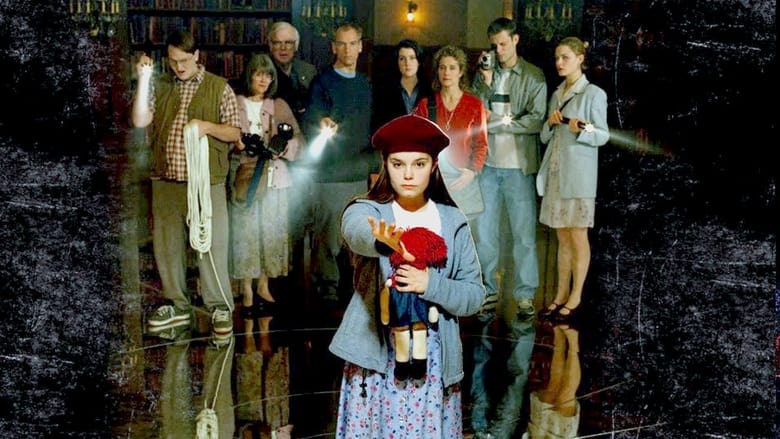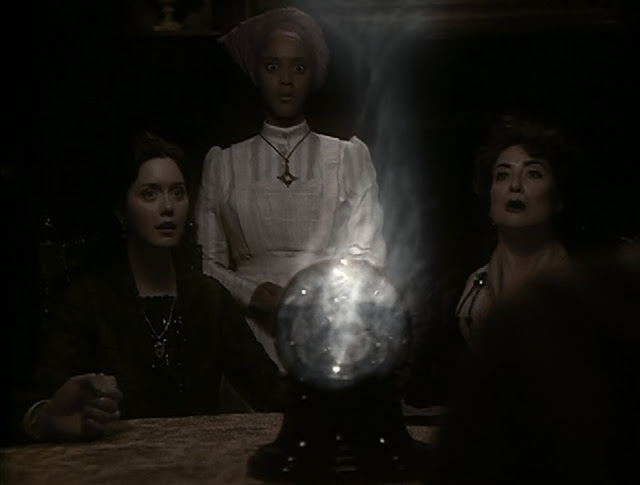Ariel Powers-Schaub turns back the clock to examine a Stephen King mini-series that remixed Hill House with varying results…
“A good house cuddles and comforts. A bad one fills us with instinctive unease. Bad houses hate our warmth, our humanness. That blind hate is what we mean when we use the word haunted.” Sound familiar? It kind of sounds like Hill House, but not quite, right?
In 2002, Rose Red aired as a TV miniseries that Stephen King wrote as an original story (as opposed to an adaptation of one of his books). Inspired by The Haunting of Hill House (1959) and the Winchester mystery house, it followed a group of characters who spend a few days inside a haunted house. But what made this so clearly a King story were the characters and relationships: led by a university professor and researcher, who is also the last living family member to whom the house belongs, the rest of the group had various psychic abilities – such as precognition and automatic writing – making this a team ready for paranormal investigation.

Like all art, Rose Red is a product of its time, though in this case it would not be made today: at least, not exactly. The Haunting of Hill House already has so many adaptations, including the phenomenal 2018 Flanagan Netflix series, and as it remains such a quintessential ghost story audiences will always want some version of it. But certain elements of Rose Red would prevent it from gaining popularity now.
There are a few Stephen King tropes that we’ve seen time and time again – the wormy young man with the overbearing, infantilising mother; the angry, inattentive father; a person with disabilities who also happens to be magical. Most of the characters we’re used to seeing in King novels are familiar here without being too repetitive – he can write many versions of a sociopathic bully, for instance, without them feeling cloned. All this can feed into the comfortable familiarity of his stories. However, twenty years after Rose Red we might look back at the character of Annie (Kimberly J. Brown) and cringe: not because Annie herself is embarrassing, but because of everything else around her.

Annie has autism, and while she isn’t nonverbal she doesn’t speak much. She’s also able to see ghosts, manipulate electronics with her mind, and make rocks fall from the sky (a nod to King’s own novel, Carrie 1974). We’ve seen King write magical disabled characters before, such as in The Stand (1978) and Dreamcatcher (2001), though there is arguably a potential problem in locating all the magic you need for a story in a person with autism. That’s where we were in 2002, and the hopes are we’re in a place culturally where we can handle autism with more care and nuance today.
As is the case of all of King’s made-for-TV miniseries, it’s also shot and edited like a TV show. While most of the show takes place in a giant old house the majority of shots are close-ups on groups of characters. There is a section at the beginning of Part 2 where we see some sweeping shots of empty rooms with spooky narration that really puts us in mind of Hill House, but this whets an appetite which is never sated. If a version were made today it would likely go right to a streaming service, being granted the budget to accommodate cinematic storytelling.
Rose Red also can only ever be a certain level of scary, because it had to be suitable for prime time audiences, meaning that the visceral scares audiences hope for in a haunted house film never come to fruition. Creators also had to plan for regular commercial breaks, pacing the story accordingly, and watching it on DVD can feel stilted and disrupted.

Something else that worked against Rose Red when it aired was that audiences weren’t really in the mood for haunted house stories at the time. It aired very shortly after 9/11, and the horror genre was about to enter a decade that focused on person-to-person violence, no supernatural elements needed. There’s no way King could have predicted this shift in genre sensibilities of course, and it just led to bad timing for Rose Red.
Though not my favourite King’s miniseries – that would be IT (1990), closely followed by Storm of the Century (1999) – it’s worth seeing to check out what Hill House might’ve looked like through the eyes of Stephen King at the turn of the millennium. Plus, you get to see Melanie Lynskey, and who doesn’t love her?
![]() Ariel Powers-Schaub
Ariel Powers-Schaub
Looking for more Stephen King content? With more articles here, we also have a mini-series on our podcast looking at key adaptations of his work.

One response to “ANALYSIS: ROSE RED, 20 Years On”
[…] to attention given to King’s TV adaptations (including The Stand, Storm of the Century and Rose Red). That alone should satisfy Constant Readers, and makes this celebratory film a “Needful […]
LikeLike